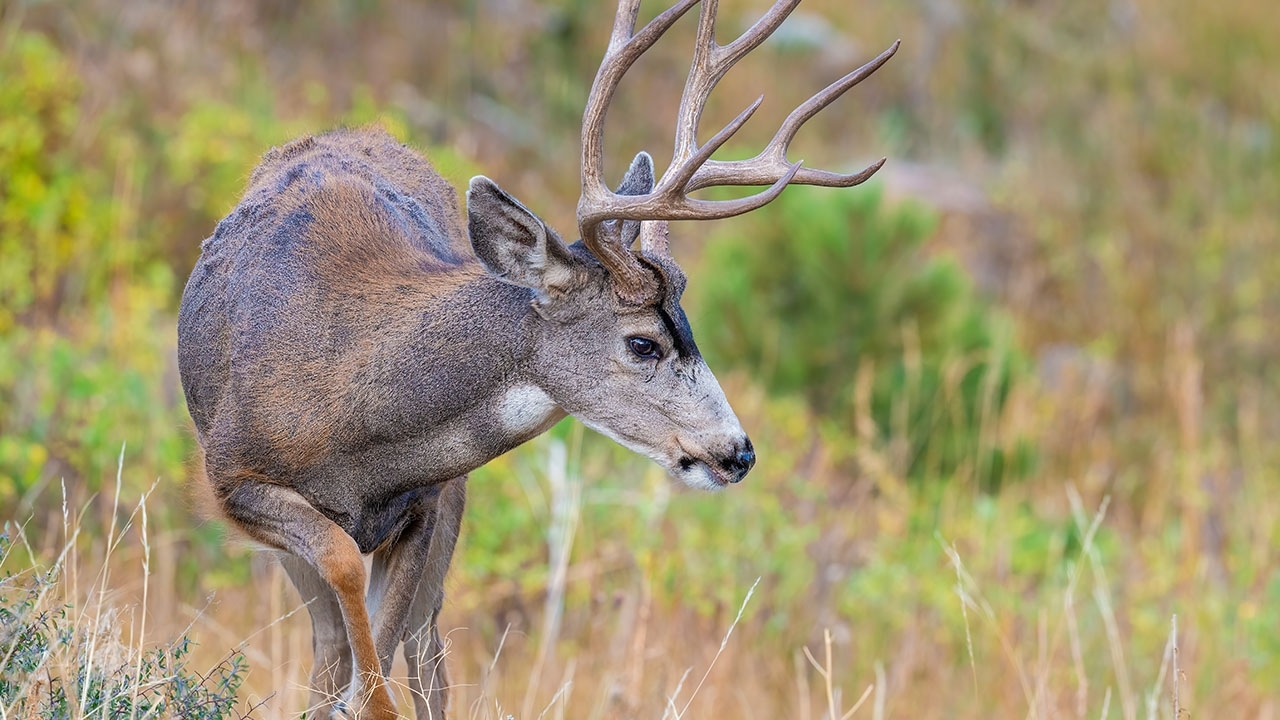NWRC Research Areas: Chronic Wasting Disease

Our scientists are developing and evaluating tools and strategies for chronic wasting disease (CWD) detection and management.
As of July 2024, CWD has been detected in free-ranging cervids in 34 U.S. States and 4 Canadian provinces, as well as in Norway, Sweden, and Finland. In captive cervid facilities, CWD has been detected in 19 states and 3 provinces, as well as in South Korea. More information on CWD distribution can be found at: Distribution of CWD in North America.
CWD has ecological, economic, and cultural impacts, affecting numerous stakeholders and costing the U.S. economy tens of millions of dollars each year. Concerns about these impacts drive research that aims to reduce the spread of CWD and facilitate the management of healthy cervid populations.
From 2002 to 2019, NWRC was active in CWD research, conducting more than 100 basic and applied studies on deer and elk to help mitigate CWD transmission. Results from this research helped to inform management and guide additional studies, such as those underway today.
NWRC’s CWD efforts were renewed in 2023 with the creation of a new CWD research project and the establishment of a state-of-the-art prion laboratory. CWD research at NWRC now comprises both laboratory and field studies focused on the development of new tools and techniques to aid CWD management in cervids.
Current CWD research studies are focused on:
- Developing tools to maximize the detection of CWD in live cervids,
- Assessing the role of scavengers in the ecology of CWD,
- Investigating the potential for emergence of new CWD strains,
- Using structured decision making to inform CWD surveillance and coordinate adaptive management,
- Understanding behavioral changes and resource selection in CWD-infected cervids,
- Identifying the underlying mechanisms of CWD “hot spots” on the landscape, and
- Characterizing the impact of CWD on cervid populations in North America.
What Is CWD?
CWD is a fatal neurodegenerative disease that is known to affect members of the deer family, also known as cervids. In North America, mule deer, white-tailed deer, elk, and moose are currently affected.
CWD is caused by prions, which are misfolded, infectious forms of normal proteins. In infected animals, these prions accumulate in the central nervous system over time, leading to progressive neurodegeneration, loss of coordination and body condition, and eventually death. CWD is not known to infect people.
Project Goal and Objectives
Goal: To develop, optimize, and deploy tools and techniques for management and mitigation of CWD in free-ranging cervids
Objectives:
- Improve CWD detection to enhance surveillance and support management
- Investigate the community ecology and evolution of CWD
- Evaluate CWD pathogenesis, prion kinetics, and transmission dynamics
- Determine the influence of cervid movement ecology, behavior, and resource selection on CWD prevalence and spread
- Use CWD models and structured decision making (SDM) to inform management and surveillance
Contact Us
Chronic Wasting Disease Research
Jennifer Malmberg, Project Leader
Email: jennifer.malmberg@usda.gov
Phone: 970-266-6286
4101 Laporte Ave.
Fort Collins, CO 80521
Dr. Lindsay Parrie, Prion Research Biologist
Christian Franco, Wildlife Biologist
Joanne Tennant, Biological Science Technician

